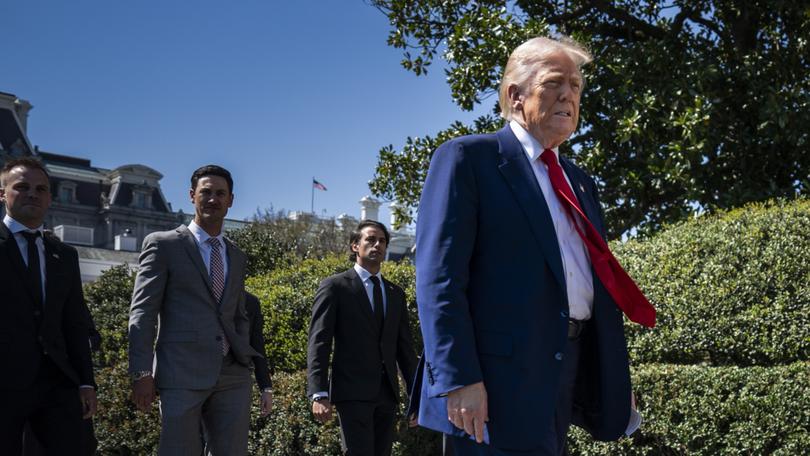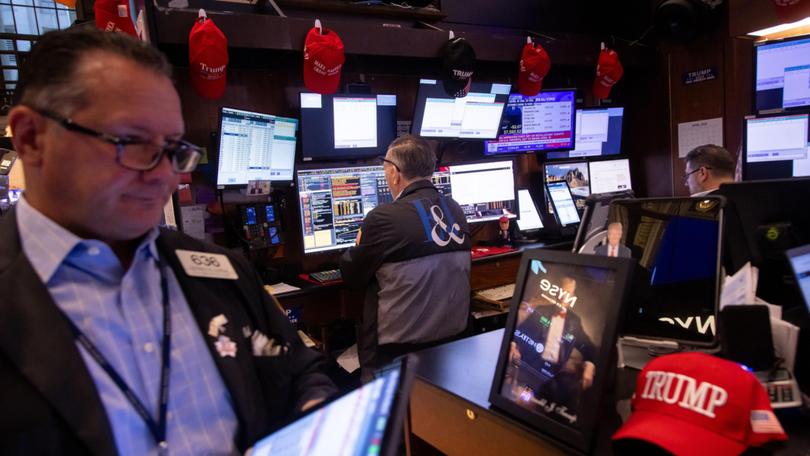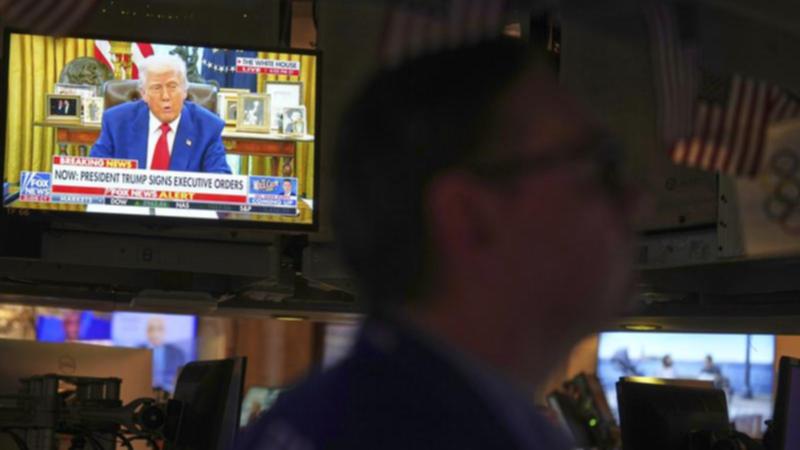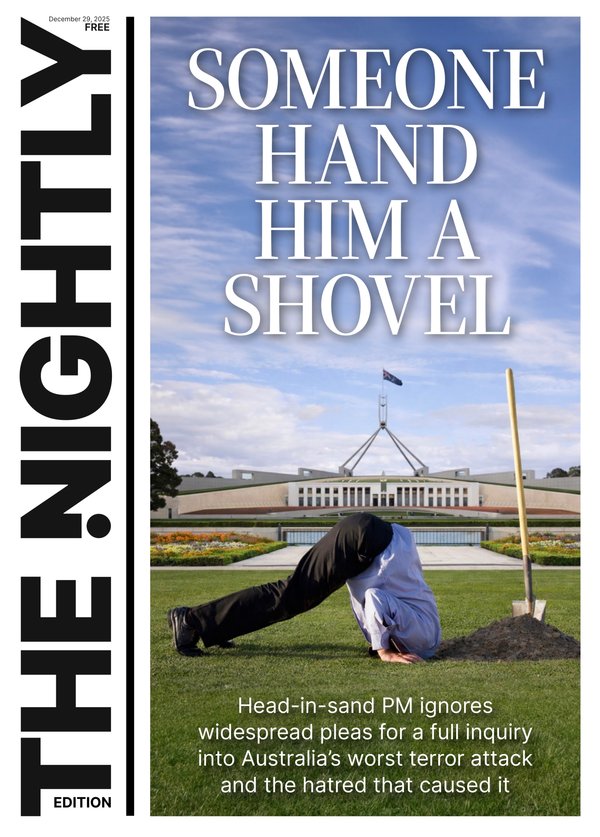THE ECONOMIST: Will Trump’s short-term pain lead to long-term gain? Gritty reality of USA’s yippy

Donald Trump has been adept at finding euphemisms for the chaos. When both stocks and bonds sold off last week, fuelling concerns about financial stability, Mr Trump said it was a case of people “getting a little bit yippy”. After pausing some tariffs for 90 days, he said all the turbulence was merely “a transition cost” en route to the glorious reconstruction of the American economy. “In the end it’s going to be a beautiful thing,” he purred.
Mr Trump is, in other words, trying to tell a specific story about his policies: that Americans will experience short-term pain but reap long-term gain. The disruption of the past few weeks raises questions about both sides of his grand bargain. Could the short-term pain be quite a bit worse than his euphemisms imply? And will the long-term gains truly materialise?

Sign up to The Nightly's newsletters.
Get the first look at the digital newspaper, curated daily stories and breaking headlines delivered to your inbox.
By continuing you agree to our Terms and Privacy Policy.The short-term consequences of Mr Trump’s tariffs are easier to discern at this point. For a couple of months there has been a bifurcation between weak opinion surveys and more resilient hard data. The University of Michigan’s consumer-sentiment index, a closely watched barometer, plunged in April to 50.8, its second-lowest level in history. Worries about tariffs are the main drag: consumers think prices will rise by 6.7 per cent over the next year, the highest expected inflation in more than four decades.
Corporate confidence in Mr Trump’s agenda soared after his election victory, as managers anticipated pro-growth measures including deregulation and tax cuts. But in the past few months his monomaniacal focus on tariffs has led to a reversal. A small-business optimism index published by the National Federation of Independent Business, a lobby group, has fallen for three straight months.
It is tempting to dismiss these surveys as being more about vibes than reality. The labour market is still in good shape and high-frequency trackers of credit-card spending have remained strong. Yet the details are less rosy. The apparent resilience of consumers in part reflects their concerns. They appear to be bringing forward purchases of both electronics and vehicles in an attempt to get ahead of tariff-fuelled price rises. And official employment data are published with a lag. Private measures point to a potential surge in firings.
The main story, for now, is one of high and rising uncertainty. On April 9, when Mr Trump’s “reciprocal” tariffs took effect, economists at Goldman Sachs said that they saw a 65 per cent chance of America falling into a recession within the next 12 months — a stark forecast from such a prominent bank. Almost as soon as it issued that forecast, Mr Trump announced his 90-day tariff pause, leading Goldman to reduce its probability to 45 per cent. That is as good a summary as any of the economy’s short-term prospects: it is a coin flip about whether it will contract this year; its fate rides to a distressing degree on the vicissitudes of Mr Trump’s tariff push. By itself that is already a serious deterioration from a couple of months ago, when most forecasters thought the American economy would grow by about 2.5 per cent this year.

Longer-term consequences will depend on where Mr Trump’s tariffs end up. There is not much reason to be optimistic. Protectionism rewards inefficiency by directing capital and labour towards companies and industries that would otherwise struggle on the global stage. A study published by the World Bank in 2022 examined data for 151 countries from 1963 to 2014. It found that a tariff increase of nearly four percentage points leads, on average, to a roughly 0.4 per cent decline in output after about five years. That, in turn, is driven by a nearly one per cent reduction in labour productivity.
Extrapolating from such studies to Mr Trump’s current course of action is hardly satisfying. His tariff moves go beyond the outer limits of conventional analysis. Even after factoring in his latest exemptions for smartphones and other electronic products, the average effective tariff rate applied by America has still gone from 2.5 per cent last year to above 20 per cent this year — almost five times higher than the increase examined in the World Bank study.

Moreover, just looking at how tariffs weigh on trade is too narrow a prism. Most studies focus on the current account given that the first-order effect of tariffs is a reduction in imports. But the corollary occurs in the capital account, showing up as smaller financial inflows. For America that will translate into weaker foreign demand for its assets. Since the start of April yields on ten-year Treasuries have jumped by half a percentage point. Over a longer period, one probable outcome is that Americans themselves will have to buy more government debt, diverting cash that could have gone into private investment.
The Penn Wharton Budget Model, a research group, has tried to piece together the impact on both trade and capital. It estimates that over the next three decades, these will combine to shrink America’s GDP by about eight per cent and wages by seven per cent relative to their pre-tariff trajectory. Most striking, it anticipates that America’s overall capital stock will end up more than a tenth smaller than it would have been. As such, America will be a country with shabbier roads, older airports and, despite Mr Trump’s efforts, more dated factories.
All these estimates should be taken with a pinch of salt. Mr Trump’s cycle of threat, action and retraction means that economists, like firms and consumers, are on unstable ground when thinking through the impact of tariffs. Even if his policies were clear, predictions about the shape of the economy several decades hence would be rough approximations at best. But the balance of probabilities is nevertheless that things will be bad this year, and potentially quite a bit worse in the years to come.
Originally published as Short-term pain will lead to long-term gain, says Trump. Really?
